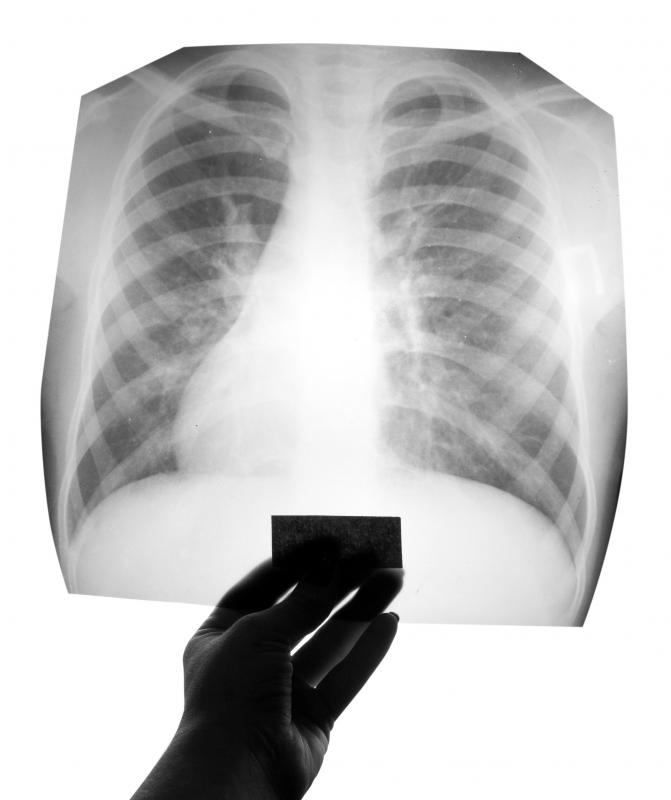At WiseGEEK, we're committed to delivering accurate, trustworthy information. Our expert-authored content is rigorously fact-checked and sourced from credible authorities. Discover how we uphold the highest standards in providing you with reliable knowledge.
What Are the Signs of Tamponade?
Tamponade, also known as cardiac tamponade, is a type of heart condition. It occurs when fluid accrues in the cavity between the outer covering of the heart, called the pericardium, and the heart muscle. This fluid causes compression and keeps the ventricles from expanding, prohibiting blood flow to and from the heart. Signs of tamponade include chest pain, trouble breathing, and fainting. They may also include low blood pressure, lightheadedness, and dizziness.
Cardiac tamponade is a serious condition that requires immediate emergency medical care. Although there are general signs of tamponade that are likely to occur, these signs will often vary depending on what the underlying cause of fluid buildup is. Conditions that commonly result in tamponade include trauma to the heart, inflammation of the pericardium, and myocardial rupture.

Chest trauma can result in damage to the heart. More particularly, the pericardium surrounding the heart suffers trauma. Both instances can trigger inflammation that prevents the pericardium from stretching as it should. This inflammation compresses the arteries of the heart, restricting blood flow. In turn, a reduction of blood flow causes a few common signs of tamponade, such as a decrease in blood pressure, dizziness, and fainting, in addition to the pain that may be experienced from the trauma.

Myocardial rupture can also contribute to the signs of tamponade. A myocardial rupture commonly occurs as a result of a heart attack. The muscles of the heart affected by the heart attack become thin and rupture. This rupture allows fluid to flow into the pericardium, leading to cardiac tamponade.
A more common cause of many of the signs of tamponade is heart surgery. Patients who have had heart surgery are at risk for developing tamponade during the first 24 to 48 hours following the surgery. The risk of tamponade stems from chest tubes that become clogged. They cannot drain the blood as they are intended, and the blood drains into the pericardium.
If any of the signs of tamponade are experienced and noted by a doctor, further testing is often ordered to confirm a diagnosis. Physical testing includes listening to chest sounds with a stethoscope, monitoring blood pressure, and checking oxygen levels. Imaging tests can include an electrocardiogram (EKG) and a chest x-ray.
When the signs of tamponade lead to a diagnosis, treatment will often follow quickly. Tamponade is treated in a hospital setting. A needle is inserted into the pericardium, often to place a cannula. The cannula keeps a spot open in the pericardium to allow repeated drainage of the fluid.
AS FEATURED ON:
AS FEATURED ON:












Discuss this Article
Post your comments